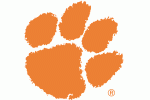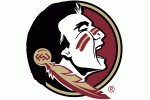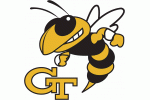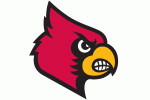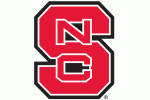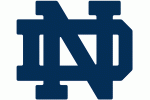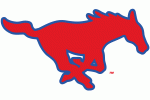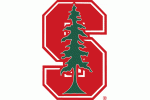Keep your fancy advanced analytics... the ones Syracuse University pioneered a program in.

Surprise: Jim Boeheim does not subscribe to basketball analytics.
The Syracuse Orange men’s basketball coach sounded off against the idea that defensive players can be tracked as individuals for their assignments. He blamed KenPom for the idea, deflected the notion that Syracuse becomes tired late in each half (despite some evidence it could happen), and attributed the team’s lapses to it notbeing good enough.
Boeheim turned to many of the same lines he used during the Orange’s early-season struggles. Only this time, SU has no time to improve. Interior issues remain and Syracuse struggles to close games.
No high-level victory opportunities will emerge unless his team charges deep into the ACC Tournament. Syracuse deserves credit for hanging with its tougher February schedule, Boeheim said, but should not be expected to defeat a Louisville.
“I think they’re playing about as well as they can play, given the resources we have, the players we have.”
That is true. It’s also the staff’s job to look for answers, improve, adjust and supply talent through recruiting to raise that ceiling. For Syracuse to have dreamed of reaching the NCAA Tournament bubble lended credit to both the players and staff. The Orange started 4-4 after a disastrous opening-night loss to Virginia where they looked inept on both ends.
Jalen Carey fell from the lineup, then lost his season to surgery. An overwhelmed Joseph Girard III took over, then steadily improved on offense all season to where he’s finishing inside through Louisville’s bigs. The Orange rode increased ingenuity on offense and dazzling shooting to a thrilling upset over Virginia that sparked five straight wins.
Regressing from that demands accountability. Fouling, defensive rebounding and rotations plague close losses. The Orange aren’t good enough, he said. They also haven’t improved defensively since late losses to Notre Dame and Virginia Tech undermined their record further in January. He said it himself after the Pittsburgh win, and proved to be right.
Q: Considering how much the team has improved...
— Bobby Manning (@RealBobManning) January 25, 2020
Boeheim: "I don't think so."
"Our def was better tonight, but Pitt is not a great 3-pt shooting team. Along the way you're going to play a mixture of teams ... we're getting just a little better. Not enough."
There’s an out for every outcome. Syracuse is undermanned, but have the players to grind out 40 minutes. Their defense isn’t good, but it’s not the guards. After the Hokies loss, Boeheim might have alluded to a piece written here attributing defensive breakdowns to the top of Syracuse’s zone.
“Most of those are forward plays,” he said then. “I don’t know where they get this dynamic of how many points scored against how many people.”
The statistics came from Synergy, a player-tracking software used by NBA and college teams to determine both offensive and defensive productivity per-possession. It primarily tracks play types — pick-and-rolls, transition, isolation — to determine how many points per possession a team scores and allows. One point or more indicates that they’re at least getting foul shots, less means the plays regularly come out empty.
It isn’t perfect. If a team starts a pick-and-roll and doesn’t successfully finish the set, without actually shooting and missing, it isn’t considered a botched pick-and-roll. The same goes for defensive credit.
Synergy tracks individual matchups on defense, approximating who was the primary defender on a play where an offensive player shot. Synergy won’t capture plays where Buddy Boeheim or Girard do their job and dissuade a player from shooting. The zone also makes it difficult, as we will hear momentarily.
/cdn.vox-cdn.com/uploads/chorus_asset/file/19733975/Screen_Shot_2020_02_20_at_11.50.25_AM.png)
The technology is coach-driven, though. Duke adopted it first. Its cameras are in every NBA arena. The company accommodates concerns its clients have. It’s not perfect, and should be used in context for coverage.
It’s also not useless, especially when Girard’s defensive gambles and Boeheim’s failure to rotate to shooters appear on film. Boeheim said earlier this season that the Orange are slow to rotate to threes.
But he blasted the concept of assigning blame on Wednesday.
“When you start putting in print they score 25% against the zone against Buddy and 25% against this guy. I’m telling you right now, no one in this room, nobody that’s doing KenPom, knows who’s at fault when somebody scores on us. No one knows. Not one person. Because it’s how we’re playing the zone at that time, we may have the center up, so if it gets down there it’s not the center’s fault if they score inside, it’s the forward’s. If we have the center back and they score down there, it’s the center’s fault. If they score in the corner, it could be the forward, it could be the guard, it could be the center. There’s no way to pinpoint who’s at fault in our defense. Even when I look at it it’s hard sometimes, because there’s certain movements and certain plays and certain situations that there’s really not any fault.”
As Ken Pomeroy noted last night, he has nothing to do with player tracking or assigning defensive blame. KenPom’s website attaches adjusted offensive and defensive ratings to predict how a team would perform at both ends against an average opponent at a neutral site. He standardizes the ratings using a Pythagorean calculation for expected winning percentage, but we’ve already gone too deep down that hole.
Entertaining presser including the complete non sequitur where Boeheim invokes my name about something I have nothing to do with and implies I am dumber than a kindergartner but mostly he makes good points. https://t.co/tkhJkCs3VI
— Ken Pomeroy (@kenpomeroy) February 20, 2020
Basically, KenPom tries to eliminate all the noise that surrounds college basketball teams and boil it down to just how good could they be if they played tonight. It’s become one of the most-referenced stats in college basketball coverage. .
Boeheim keeps it simple. No film, morning shootarounds and little timeout feedback. There’s something to that. I can’t explain KenPom calculations or put everything on Synergy in context. Sport analytics are a new, growing and imperfect science. One that Syracuse University is a leading institution in teaching and researching (I took one class).
The Oakland Athletics that pioneered advanced metrics never won anything of note. Buying into it or not doesn’t sway success one way or the other; though talent (adhering to those principles) stands a better chance. It helps maximize it. For us, it’s about adding flavor to what we see and testing our eyes to assign some accountability.
Despite his own insistence on accountability internally, as he showed pulling Bourama Sidibe early against Louisville, Boeheim does not want his individual players criticized by the media. So his distaste for the stats likely stems from who is using it, and for what.
Boeheim doesn’t offer alternatives to the notions we use evidence to surmise. So we’re left to use tools at our disposal. Nobody claims to know more about basketball than him — certainly I don’t — and he doesn’t owe us any answers on Syracuse’s weaknesses. It’s simply our job to curiously search for answers, one numbers provide some (not all) answers to.




